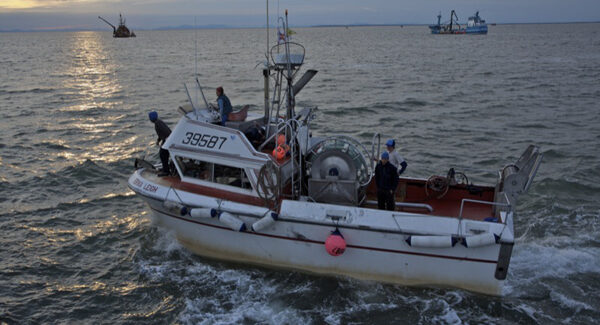This article was originally published on the One Fish Foundation blog on July 16, 2025 with an update (at the bottom of this article) on July 18, 2025. It is republished with permission.
Since I launched this blog in 2015, I’ve written about Bristol Bay, Alaska and the effort to protect it from the proposed Pebble Mine 16 times.
I could easily have called the blog “The Bristol Bay Chronicles.”
I did the calculations last week after reading a disturbing news item that once again reveals the chaotic, frustrating quicksand feeling that seems inherent in the effort to protect the world’s largest wild sockeye salmon run from a massive toxic, open pit mine.
The US Justice Department recently filed court papers signaling the Trump administration’s willingness to revisit the Environmental Protection Agency’s 2023 preemptive veto of Pebble’s proposed copper and gold mine. This filing is in response to a lawsuit Pebble’s owners, Canadian firm Northern Dynasty Minerals, filed after the EPA used the Clean Water Act to veto the project, claiming that it would irreparably harm pristine salmon habitat in Bristol Bay’s watershed.
Once again, politics, money, influence and greed are keeping the project alive even after it was on its deathbed. It also means the powerful coalition of Bristol Bay protectors will continue to stand up to the threat as they’ve done for decades.
How’d we get here?
I expect many of those protectors are asking that now, as they’ve asked multiple times in the past.
For nearly 25 years, entities behind the Pebble Mine have sought to create one of the world’s largest open pit mines right in Bristol Bay’s headwaters. The original proposal called for a footprint nearly the size of Manhattan with a tailings dam to dispose of the toxic mining waste that would be about 700 feet deep and extend for a 10-square mile area. Never mind that this tailings dam would have to hold up to 10 BILLION tons of toxic copper, arsenic diesel and other nasty stuff forever … in an earthquake hotbed.
The fact the mine hasn’t been built in that timeframe is a testament to the perseverance and commitment of an unlikely but beautiful collaboration of commercial, recreational and subsistence fisherfolk along with scientists, conservationists and advocates from around Bristol Bay, the state and beyond.
More than 80% of the people in Bristol Bay and more than 65% of Alaskans have said they oppose the mine. The Bristol Bay region is not only home to the world’s largest wild sockeye runs, but also to one of the world’s largest intact wild salmon runs supporting 5 species of wild Pacific salmon. Its economic impact is huge: $2.2 billion and more than 20,000 jobs.
The head-spinning swings in the political tide for and against Bristol Bay over the years have been emotionally, psychologically and physically draining for so many people fighting to protect their way of life.
Here are some of the highlights:
- 2014: the Obama administration was set to use the Clean Water Act to preemptively veto Pebble’s federal permit. The administration did not finalize this act. The Breach film about protecting Bristol Bay and wild salmon is released.
- 2016: the first Trump administration appointed Scott Pruitt, someone with a long history of suing EPA on behalf of mining interests. Negotiations began on removing the barriers to the project.
- 2018, Pebble’s owners filed a permit with the US Army Corps of Engineers (USACE), which reviews federal water dredge and fill applications for mining operations. The permit reportedly called for a smaller mine.
- 2019: USACE releases draft Environmental Impact Statement (EIS). Critics claim the EIS underestimates the risk of earthquakes jeopardizing the integrity of the tailings dam holding the toxic waste, risking permanent damage to the watershed.
- 2019: EPA revokes draft Clean Water Act protections set by the Obama Administration, days after the Alaska regional EPA administrator publicly slammed the draft EIS for underestimating the threat to the watershed.
- 2020: One month after issuing its final EIS clearing a path to permit the mine, the USACE reverses course and claims the mine would pose an environmental threat shortly after Donald Trump, Jr. publicly states Bristol Bay is no place for a mine.
- 2020: USACE formally rejects the Pebble permit. This comes shortly after secret tapes record Pebble executives bragging to undercover journalists that they have Alaska’s state and federal politicians in their back pockets and that they intend the mine to be much larger, and operate much longer than the permit states.
- 2023: Biden Administration EPA preemptively vetoes the Pebble project as proposed citing the Clean Water Act Section 404 (c). Biden celebrates with staff and Bristol Bay defenders at the White House. Pebble sues to overturn the ruling.
- 2024: Trump is elected, and Pebble owners start talking about negotiating a settlement to the lawsuits. Trump appoints Susie Wiles as chief of staff, a political operative who lobbied on behalf of Pebble Mine.
- 2025: Department of Justice files court papers signaling potential settlement with Pebble’s owners, indicating a review of the previous EPA permit denial.
Got all that? See what I mean about political intrigue and a storyline that looks like a frenetic stock chart? See how one administration in two terms can support the mine, reject the mine and then hint at supporting it again? See how this would affect Bristol Bay’s defenders over the years?
Still fighting
The reality is that Pebble becoming fully permitted and operational any time soon is still a long shot. Even if the EPA somehow rescinds its veto, there would still be some regulatory and legal barriers to overcome.
That said, Bristol Bay’s protectors once again see the shadow of the Sword of Damocles. Not until permanent protections established by federal or state legislation are in place will these protectors be able to fully breathe a sigh of relief.
There have been several discussions in Congress about creating a path toward such legislation, but nothing has been advanced very far. And it’s not likely such a bill would go far in the current political climate. In a recurring theme with this administration, the environment is being sacrificed at the altar of greed.
However, Alaska state legislators moved to protect Bristol Bay in May by introducing the Bristol Bay Forever Act. Driven by folks in a the state that would most be impacted by the mine and whose residents predominantly oppose the mine, this bill would ban all extractive mining within a large section of the Bristol Bay watershed.
Alannah Hurley, executive director of United Tribes of Bristol Bay, has been at the forefront of the battle. “We envision a future where our healthy communities are thriving and remain rooted in our salmon-based cultures and traditional Native values,” she wrote in an opinion piece in the Anchorage Daily News. “ We envision a long-term, sustainable fishery in Bristol Bay that supports the ecological, cultural and economic well-being of Alaska communities. But this can only be achieved if our watershed is protected from becoming a toxic mining district.”
So why have I spilled so much ink about this particular issue?
Because the Bristol Bay fishery by and large is the epitome of our vision for a local, sustainable seafood system. Because it’s our collective duty to support the local, independent folks and organizations that produce our food. Because it’s our responsibility to protect the natural resources that sustain us.
And because what happens here is a microcosm for our relationship to natural resources around the world. If we can protect the world’s largest wild sockeye salmon run here, we can protect similar critically important wild spaces elsewhere.
Again we stand with those who continue to defend the natural resources that feed themselves and folks throughout the lower 48 states and beyond. We stand for the pristine, wild land- and seascapes that are increasingly under threat from greed-driven industrialization.
And we stand for the salmon.
I urge everyone to consider what that means for all of us.
UPDATE (7-18-25)
Carrying on with the whipsaw flip-flop theme, the US Department of Justice (DOJ) yesterday filed court papers that suggest the DOJ was changing its mind and once again supporting protections for Bristol Bay … one week after suggesting in court papers it was open to negotiating a settlement with Pebble Mine’s owners, Northern Dynasty Minerals, and to reconsidering previous permit denials. The court filing states there is no forthcoming settlement with Northern Dynasty, whose stock price dropped 50% yesterday. As such, the DOJ appears set to continue supporting previous denials of critical Pebble permits from both the U.S. Army Corps of Engineers and the Environmental Protection Agency. If the DOJ sticks to this position (let’s hope so!), this would be good news as we and other organizations fight to establish permanent protections for Bristol Bay. Meantime, Pebble’s lawsuit against the permit denials is still pending, so we will continue to monitor the situation. Stay tuned!!!


